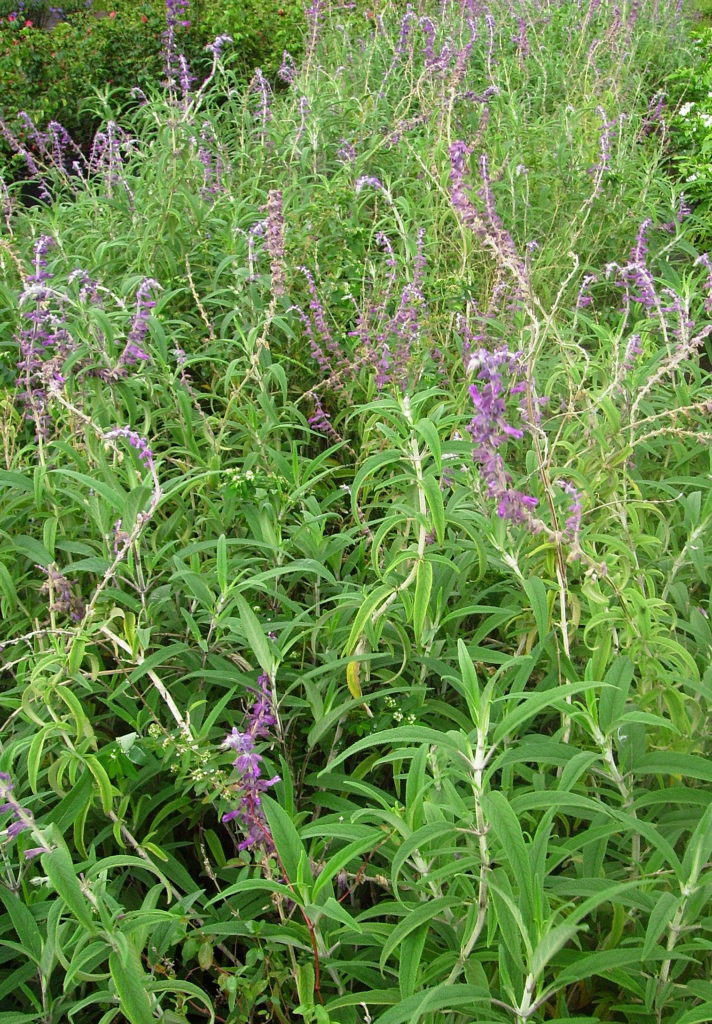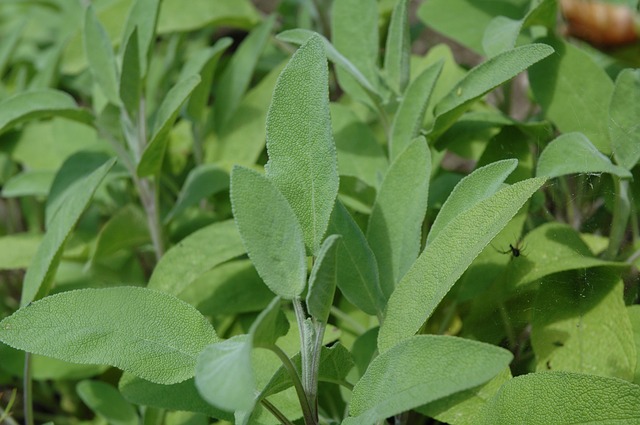Thanksgiving is a favored holiday and is always celebrated on the fourth Thursday of November. I have much to be thankful for this year. Family and friends are well and thriving, there is food on my table, and I continue to talk about and be around many green, growing things and the folks who treasure them. This year salvias are fascinating to me; there are sage varieties for growing in the landscape and for use in the kitchen.

As we head into the productive fall gardening season for warm areas and spend time among the green, growing things, I look for beautiful, practical plants that decorate the garden. Salivas or sages fill this need. In the landscape, there are many which work as flowering perennials, and at the Thanksgiving table, kitchen sage is often the flavor of the day.
Salvias are some of my favorite plants for warm-season gardens. There are more than 900 species that make up the genus Salvia, and most are known by the common name sage. They are distributed worldwide in temperate and tropical areas with centers of diversity in Central and Southwest Asia and Central and South America.

Salvia officinalis, or common sage, is a member of the mint family. It is a woody, low-growing shrub which is evergreen and perennial in warm climates. The aromatic leaves are opposite on the stem, oblong, 1 ½ to 2 inches, gray-green, wrinkled, and rough-textured. They are held on square stems, which are covered with wooly hairs. Flowers are produced on showy, loose spikes that are held well above the foliage. Individual flowers are small, ¾ to 1 inch long with 2 lips, fragrant, and in violet-blue, pink and white shades. Blooms appear from early summer until the first cold weather, or sporadically all year in the warmest locations.
Sage is a short-lived perennial and usually lasts about 3 or 4 years in the Florida garden. It originates from the Mediterranean and northern Africa and prefers sunny, dry climates. Sage is not picky about soil and will grow just about anywhere as long as it is in a well-drained location. After establishment, culinary sage is very drought tolerant but grows best with an occasional water application during dry times.
A traditional culinary herb, sage is a popular component of poultry seasoning and is often used in holiday dishes. Sage is also an ornamental plant installed for its beautiful silver leaves; there are even variegated selections. Use it in beds either by itself or as a background plant; it is also lovely as a container plant.
Our Thanksgiving dinner will be simple and easy this year, and I will be making cranberries and sweet potatoes roasted with sage. Here’s the recipe, cut into ¾ inches cubes 2 pounds of red-skinned and purple sweet potatoes, toss them with about a ¼ cup of olive oil, salt, pepper, and about 30 whole medium-sized sage leaves. Spread out on a baking sheet and placed in a 425-degree oven for about 40 minutes or until tender and browned.
This year, plant some sage in the garden and bring it into the kitchen. May you find plenty of happiness and thankfulness in your life and garden.
This article first appeared in the Treasure Coast Newspapers.
Leave a Reply